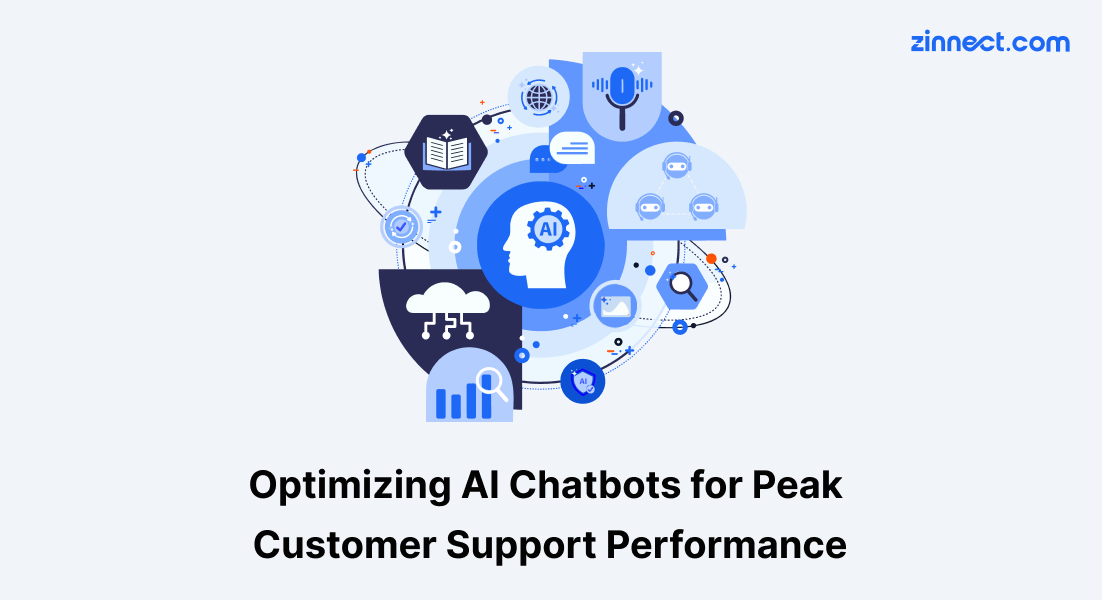Optimizing AI Chatbots for Peak Customer Support Performance

We are already seeing glimpses of that impact in how businesses communicate with customers. AI has moved beyond being a futuristic concept to becoming a practical tool that shapes everyday interactions. One of the most visible examples is the rise of chatbots.
For many companies, chatbots are now the first line of customer support. They can answer questions instantly, handle repetitive tasks, and free up human agents to focus on complex issues. But launching a chatbot is only the start.
Plenty of businesses set one up and then realize that customers still prefer to speak to a person. Others find that their bot handles a few basic queries but fails when things get slightly complicated.
The difference between an average chatbot and a great one comes down to optimization. A chatbot that is actively tuned and improved can shorten response times, increase customer satisfaction, and reduce the workload on support teams. Without that ongoing effort, it becomes just another tool that customers eventually stop trusting.

“Artificial intelligence will have a more profound impact on humanity than fire, electricity and the internet,”
Why Optimizing Your Chatbot Matters
Deploying a chatbot is not the final step. Customer queries change over time, products get updated, and expectations around fast and accurate responses are only going up.
Regular optimization makes sure your chatbot stays useful and relevant. It allows the bot to resolve more queries without human intervention, which means your team spends more time on complex, high-value issues. When done right, chatbot optimization can lead to happier customers, faster resolutions, and a much better return on your investment.
How to Improve Chatbot Performance
Use real customer data to train your chatbot.
AI chatbots are only as good as the data they are trained on. Pulling from real conversation logs helps the bot understand how customers actually phrase their questions. A phrase like “reset password” may seem obvious, but customers could also type “can’t log in” or “login not working.” Real data ensures your bot can recognize these variations.
Refine the way conversations flow.
A chatbot should feel natural, not like a menu you are forced to click through. Keep prompts short and clear. Avoid jargon and technical terms unless you are sure your audience understands them. Always offer an easy way to start over or change direction.
Plan for fallback and escalation.
A smart chatbot will get things wrong sometimes. The difference between a good and bad experience often comes down to what happens next. If the bot cannot answer, it should pass the conversation to a human agent without forcing the customer to repeat everything.
Review performance regularly.
Look at conversation logs to see where customers drop off or ask to speak to an agent. These moments highlight gaps in the bot’s knowledge. Updating responses based on these insights makes the chatbot better over time.
Add personalization where possible.
When a chatbot connects to tools like a CRM or order tracking system, it can greet users by name, provide updates on orders, and suggest relevant solutions. Small touches like this make the interaction feel more human.
What to Track to See If It’s Working
To know if your optimization is effective, focus on a few key metrics:
- Resolution time: How quickly the bot answers and solves queries.
- Containment rate: The percentage of queries the bot handles completely without human help.
- Escalation rate: How often the bot needs to pass queries to an agent.
- First Response Time: The time it takes for the chatbot to give its first reply after a customer sends a message.

Mistakes That Hold Chatbots Back
The biggest mistake companies make is launching a chatbot and never updating it. Without ongoing improvements, the bot quickly loses relevance.
Other common mistakes include:
- Adding too many features at once, which confuses customers.
- Ignoring feedback and conversation logs.
- Forgetting to create a smooth handoff to a human agent when needed.
Optimization Is Never a One-Time Task
Chatbots are like any other support tool. They only stay effective when they are updated and refined. Each customer interaction is a chance to improve responses, expand the knowledge base, and fill in gaps. Businesses that see chatbot optimization as an ongoing process get better results, happier customers, and a more efficient support team.